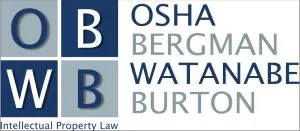- in Asia
- in Asia
The United States Patent and Trademark Office (USPTO) is implementing the Semiconductor Technology Pilot Program to expedite the examination of patent applications related to semiconductor manufacturing, research, and development. Under this program, which supports the CHIPS Act enacted by Congress in 2022, applications will be advanced out of turn for examination until a First Office Action is issued. The notice of Semiconductor Technology Pilot Program was published in the Federal Register on December 1, 2023.1
The USPTO began accepting petitions to participate in the Semiconductor Technology Pilot Program on December 1, 2023. The pilot program will be available until December 2, 2024, or until the USPTO accepts 1,000 grantable petitions, whichever comes first. As of January 15th, 2024, 42 petitions have been filed, and 1 application has been granted special status.
According to Department of Commerce, the United States currently produces 12 percent of the world's semiconductors, compared with 37 percent in the 1990s.2 In addition, the US is the fifth largest manufacturer of semiconductors, behind Taiwan, South Korea, Japan, and China.3 Consequently, many industries rely on integrated circuits (colloquially known as "chips") made overseas and are vulnerable to supply chain shortages.
For instance, the global chip crisis of 2020-2023 led to a worldwide scarcity of semiconductors and a major price increase in consumer electronics. Today, a modern car can easily run 100 million lines of code (a number that is expected to grow to 200-300 million in the near future4) and a single car contains at least 1,000 semiconductor chips. Therefore, this crisis put in evidence how these components are now an essential—if not critical—part of our everyday lives and highlighted their importance in today's interconnected economy.
In pursuit of this goal, the CHIPS Act enacted by Congress in 2022 authorized $280 billion in new funding to boost domestic research and manufacturing of semiconductors in the United States.5 The majority of the funding (~$200 billion) is for scientific R&D and commercialization, with $52.7 billion for semiconductor manufacturing, R&D, and workforce development, and another $24 billion of tax credits for chip production. The program aims to strengthen the country's position in the semiconductor industry and reduce dependence on foreign entities, thus ensuring a stable supply of these crucial components.
But even as the semiconductor industry receives major financial incentives from the CHIPS Act, prosecution of patent applications by the USPTO has historically lagged behind. According to USPTO statistics for the most recent quarter, the average number of months from the patent application filing date to the date a First Office Action is issued by the USPTO is currently 21 months.6 Further, the average number of months from the patent application filing date to the date the application has reached final disposition (e.g., issued or abandoned) is currently 25 months. Accordingly, unless the Applicant receives expedited examination under the Track One Prioritized Patent Examination Program, long application pendency times are still one of the major obstacles that hinder innovation. The Semiconductor Technology Pilot Program is expected to help reduce the wait time it takes to obtain intellectual property protection, thus accelerating the development of cutting-edge technologies in the semiconductor domain.
How it Works:
The Semiconductor Technology Pilot Program was conceived to expedite the examination of patent applications for innovations that "increase semiconductor device production, reduce semiconductor manufacturing costs, and strengthen the semiconductor supply chain". The program allows qualifying applications to be advanced (without cost to the Applicant) out of turn for examination until a First Office Action is issued. After the First Office Action, the application is back to the standard prosecution timeline.
To qualify, the Applicant must file, electronically, a petition to make special using Form PTO/SB/467 in order to be considered for the program. Under this program, the petition to make special fee is waived. Further, the Applicant is not required to satisfy the requirements of the Accelerated Examination [MPEP § 708.02(a)] or the Prioritized Patent Examination Program.
Eligible applications include non-continuing original utility nonprovisional applications. Furthermore, eligible applications include original utility nonprovisional applications that claim the benefit of the filing date under 35 U.S.C. 120, 121, 365(c), or 386(c) of only one prior application that is either a nonprovisional application or an international application designating the US. The application or national state entry must be filed electronically, and the application must comply with the USPTO's DOCX filing requirements. Applicants must file the petition to make special with the application or entry into the national stage under 35 U.S.C. 371 or within 30 days of the filing date or entry date of the application.
In regard to the technological requirements to participate in the Semiconductor Technology Pilot Program, the application must contain at least one claim that covers a process or an apparatus for manufacturing a semiconductor device, corresponding to one or more of the technical concepts within H10 (Semiconductor Devices; Electric Solid-State Devices Not Otherwise Provided For) or H01L (Semiconductor Devices Not Covered by Class H10) in the Cooperative Patent Classification system. Noteworthy examples include electronic memory devices, organic electric solid-state devices, and semiconductor devices for light emission, among others. The full list can be found here.
The petition to make special requires certain certifications. For instance, the Applicant must certify a good faith belief that the claimed invention(s) meets the technology requirement of the program, as described above, and that the claimed invention(s) are primarily focused on and improve the manufacturing of semiconductor devices. The Applicant must also certify that expediting examination of the application will have a positive impact on the semiconductor manufacturing industry. Lastly, the inventor (or any joint inventor) named on the application can only be named as the inventor (or a joint inventor) on a maximum of five nonprovisional applications in which a petition under the program has been filed.
Further, if the Applicant files the petition to make special on the date of filing of an application, the application may not be filed with a nonpublication request. In addition, if the Applicant previously filed a nonpublication request in the application, the Applicant should file a rescission of the nonpublication request no later than the time the petition to make special is filed.
Lastly, the application for which the petition to make special applies may not contain more than three independent claims, no more than twenty claims total (the "3/20" rule), and cannot contain any multiple dependent claims.
In summary, although still in its infancy, the program holds great promise as a cost-effective option for Applicants looking for rapid allowance of their patents in the semiconductor industry without having to pay exorbitant fees for prioritized examination.
Footnotes
1. https://www.federalregister.gov/documents/2023/12/01/2023-26340/semiconductor-technology-pilot-program
2. https://www.commerce.senate.gov/services/files/592E23A5-B56F-48AE-B4C1-493822686BCB
3. https://news.yahoo.com/where-us-semiconductor-industry-operates-170500414.html
4. https://spectrum.ieee.org/this-car-runs-on-code
5. https://www.congress.gov/117/plaws/publ167/PLAW-117publ167.pdf
6. https://www.uspto.gov/dashboard/patents/pendency.html
The content of this article is intended to provide a general guide to the subject matter. Specialist advice should be sought about your specific circumstances.



